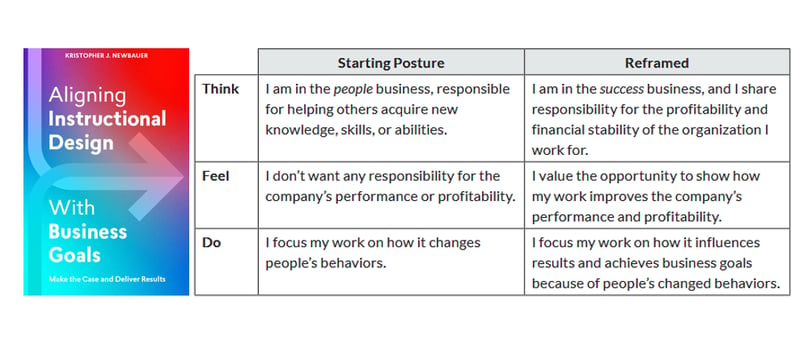CREATIVE LEARNING EXPERIENCES THAT CHANGE BEHAVIOR
Tellin’ ain’t sellin’…or learnin
Why non-mushy metrics like money are an Instructional Designer's friend.
ASSESSMENTS
5/8/20241 min read


When I designed learning experiences for adult learners as part of the sales team for an international English language training school for adult learners, we had one metric to rule ‘em all: sales.
Sales of new contracts + sales of contract renewals – refund requests.
If sales went up = good. Sales went down = bad.
Brutal? Maybe. The way? Definitely.
So I love what Kristopher Newbauer observes in his book Aligning Instructional Design with Business Goals: Make the Case and Deliver Results (ATD Press, 2023):
It may be intimidating or downright scary to think about having any responsibility for profitability, especially if you have never understood or appreciated that notion before. Accepting this comes with a great deal of accountability. It’s much easier to only be concerned with how employees’ behaviors have changed because of an initiative rather than the impact your work has on profits… How you think about the business you support informs how you understand your role in your company’s performance and profitability, which influences what you focus on when designing, developing, and delivering initiatives.
The beauty of aligning learning objectives with a non-mushy metric like money is that it removes much of the vague mushiness that characterizes performance measurement in academic settings. Instead, you have real-time feedback about whether you’re just talking a good game about solving your learner’s problems - or actually solving them.